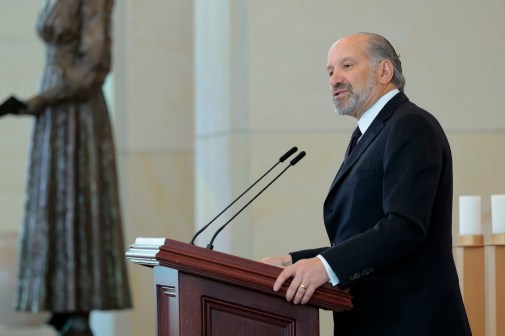Workforce challenging broadband deployment, says industry group

The creation of the $42.45 billion Broadband Equity and Access Deployment program was a historic federal investment attempting to bridge the digital divide, but one telecommunications expert worries there might not be a deep enough workerforce to deploy high-speed internet nationwide.
David Stehlin, chief executive officer of the Telecommunications Industry Association, told StateScoop that the industry struggled to get enough people to build networks even prior to the BEAD program.
“The number of candidates that are looking to join the industry are not anywhere near enough and the number of people retiring out of the industry are too many,” Stehlin said, noting that some industry analysis estimate a workforce gap of about 200,000 field workers to build broadband networks over the next five years.
The National Telecommunications and Information Administration says that the BEAD program “will only succeed if every penny is wisely spent.”
“It’s a use-it-or-lose-it type of program,” Stehlin said. “If you don’t have enough staff, you don’t have enough contractors to go build the networks, perhaps some of the states won’t be able to utilize all of the money that’s been allocated to them. Workforce is a big issue that everyone has identified as something that will certainly slow down and hopefully not stop deployments. But you don’t train a workforce overnight.”
One problem that stands in the way of supplementing the workforce is that many colleges and other training institutions do not offer any programming specifically for broadband, Stehlin said. With these gaps in mind, the TIA created Broadband Nation, a program launching in April that aims to convene industry, government leaders and training institutions to attract the next generation of broadband workers, largely through social media.
Through targeted campaigns, Stehlin said, potential candidates will be led to the Broadband Nation portal to learn about potential career paths related to broadband and get connected to training sites in their areas. The portal will also provide an online, fiber-optic training course for secondary schools, he said.
“We’re hoping to give this national problem a local solution,” he said. “We’re calling this a mission for America because by doing this, you not only have jobs and careers for yourself, but you’re helping your local community.”
Stehlin said he anticipates a strong competition among states — especially neighboring states — when it comes to attracting workers to support BEAD deployment. To come out on top, he advised, states should work with internet service providers to identify specific workforce gaps and ensure that local community colleges have the programs necessary to train workers for those positions.






